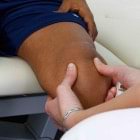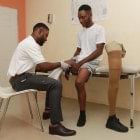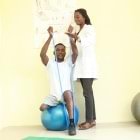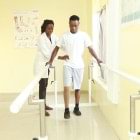Prosthetic fitting
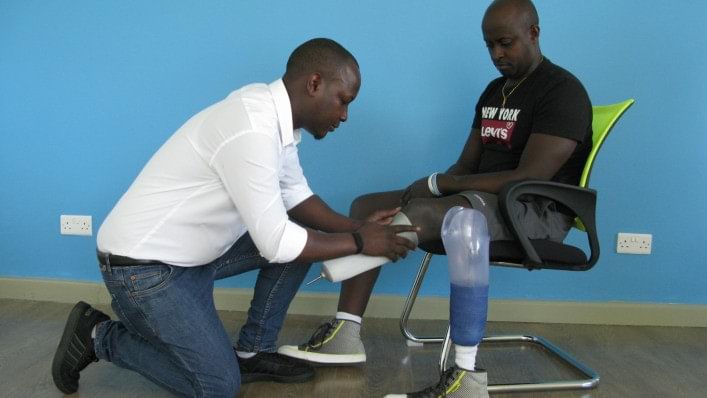
You will have many urgent questions following your amputation: When will I get a prosthesis, how do I get a prosthesis, and what prosthesis am I getting? We want to provide you with comprehensive information here about the next steps.
Your prosthesis generally fulfils numerous functions: On the one hand, it restores a large part of your mobility. By wearing a prosthesis, you also reduce or avoid posture problems and balance disorders that could result because of the missing weight of the amputated leg. It also avoids overloading your sound leg, which could result in problems over the long term. Talk to your O&P professional directly after the amputation: They explain the process that leads to your fitting with a prosthesis. Please note: At what point you get a prosthesis and whether you are first fitted with an interim (temporary) prosthesis depends on many factors. Your O&P professional can give you detailed advice.
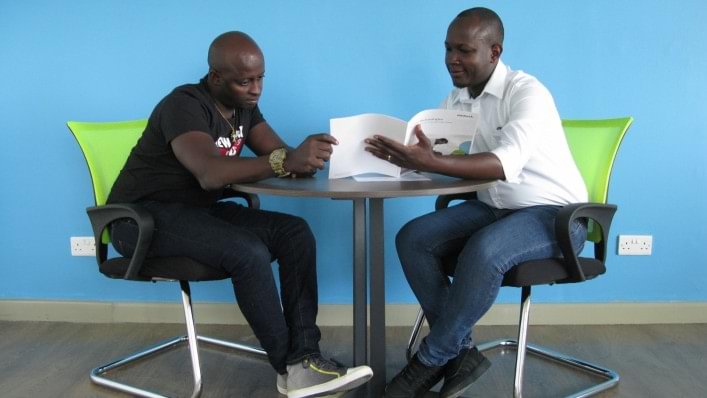
How do I get a prosthesis?
To get a prosthesis, contact an O&P professional who is familiar with prosthetic fittings. You are free to choose your O&P professional and also to change providers if you are not satisfied. Ideally you have already established contact with them before the amputation or while in hospital. Our list of experts can help you find an O&P professional with prosthetic fitting experience near you.
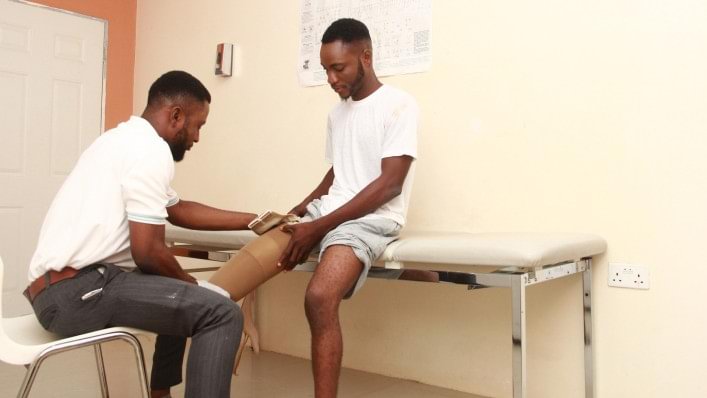
When do I get a prosthesis?
At what point you get a prosthesis, whether you are first fitted with an interim (temporary) prosthesis and when that happens is always decided on a case-by-case basis. The healing and convalescence process is different for everyone. Trust the advice of your doctor and O&P professional here, even though this may cost you some patience. One thing however is for sure: The better your residual limb is prepared for wearing a prosthesis, the better you will subsequently be able to use your prosthesis.
The following applies as a guideline: Your O&P professional will examine your residual limb shortly after the amputation and determine whether an interim (temporary) prosthesis is an option for you. Generally, after the wound has closed (which takes between two weeks and three months), measurements are taken on the residual limb and an interim prosthesis is fabricated. You wear this interim prosthesis for three to six months. It allows you to familiarise yourself with the prosthesis and helps the residual limb develop its final shape. The process of fitting you with your definitive prosthesis can begin once this has happened, the residual limb of your leg has healed sufficiently and you are once again in good physical condition.
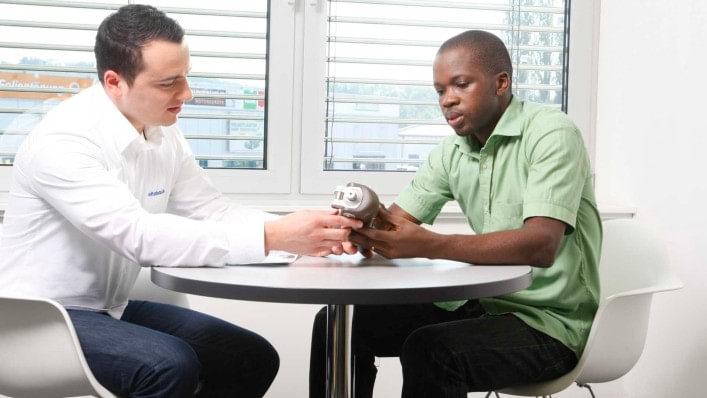
What prosthesis will I get?
What prosthesis is an option for you depends on various factors. Factors that influence the selection of a suitable leg prosthesis for you include your physical fitness and health, the amputation level, your requirements for the prosthesis and your private and work environment. Your O&P professional will advise you on all these aspects and work with you to select the corresponding components for your prosthesis.

The alignment of a prosthesis
What components a prosthesis is made of depends on the amputation level. In principle, a prosthesis replaces your missing limb, for instance your foot and your knee or hip joint, and is made of various corresponding prosthesis components. Your residual limb goes into a prosthetic socket that connects the prosthesis to your body. There are connecting elements between the individual prosthesis components. These are used for example to individually adapt the height of the prosthesis, and in part they also fulfil additional functions.
First your O&P professional will select the individual prosthesis components together with you, based on your needs. When the proper fit of the socket has been achieved after several trial fittings and the prosthesis components have been selected, the socket and components are assembled. Your O&P professional bases the alignment of the prosthesis on the examination results and existing alignment guidelines. Additional trial fittings follow once the prosthesis is ready. With the help of technical equipment such as a device known as the L.A.S.A.R. Posture, the O&P professional checks the prosthetic alignment and adapts the prosthesis even more precisely to your requirements. Then you can take the first steps with your new prosthesis.
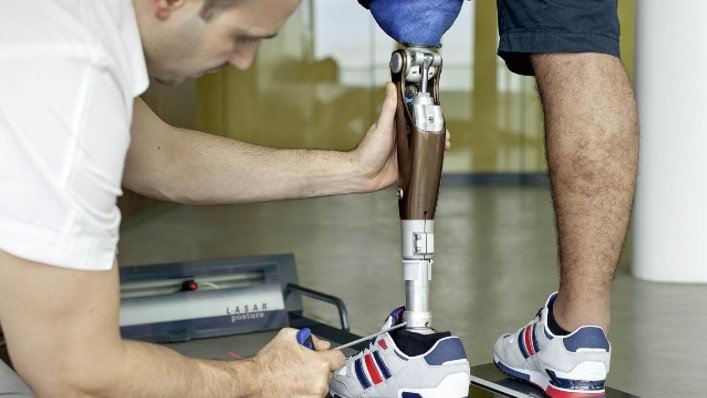
The interim prosthesis
In some cases, an initial prosthesis can be fitted soon after the amputation. You wear this interim prosthesis, which is fabricated for you by your O&P professional, until you can be fitted with a final prosthesis (definitive prosthesis). An interim prosthesis can have a favourable influence on the therapy process. It allows you to put partial weight on your residual limb early on, and to begin with initial walking and standing exercises. However, an interim prosthesis is not suitable for all amputation levels. Ideally your doctor, physiotherapist and O&P professional will decide together whether this is an option for you.
An interim prosthesis also serves to gradually adapt a prosthetic socket to fit you and to identify the suitable prosthesis components. The fit of the prosthesis is continually improved by the O&P professional during this test and trial phase, so that there should be no problems with the fit of your final prosthesis (definitive prosthesis).
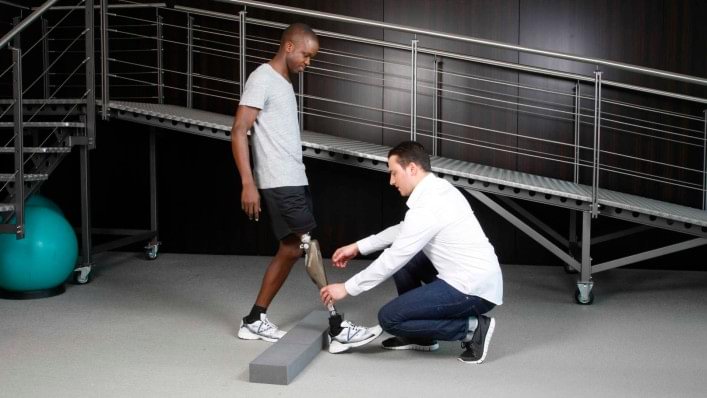
The definitive prosthesis
Following an interim fitting, you receive a definitive prosthesis that is tailored exactly to your needs. Once the volume fluctuations have abated so a definitive prosthetic socket can be fabricated, you are fitted with a definitive prosthesis.

Other devices
You may need additional walking devices aside from the prosthesis. Various walking aids such as canes, forearm crutches and anterior walkers are available, depending on your physical fitness. Many amputees are also provided with a wheelchair. You get all of this at the hospital or from a medical supply company. Your O&P professional or contact person at the hospital can help you here. They can also advise you regarding additional devices in your home environment.
